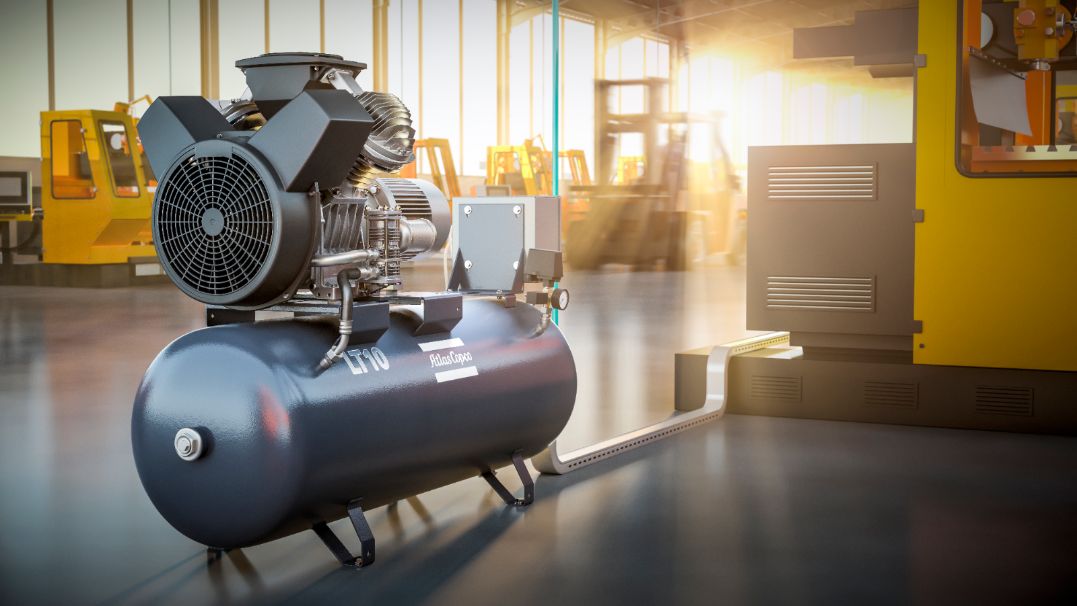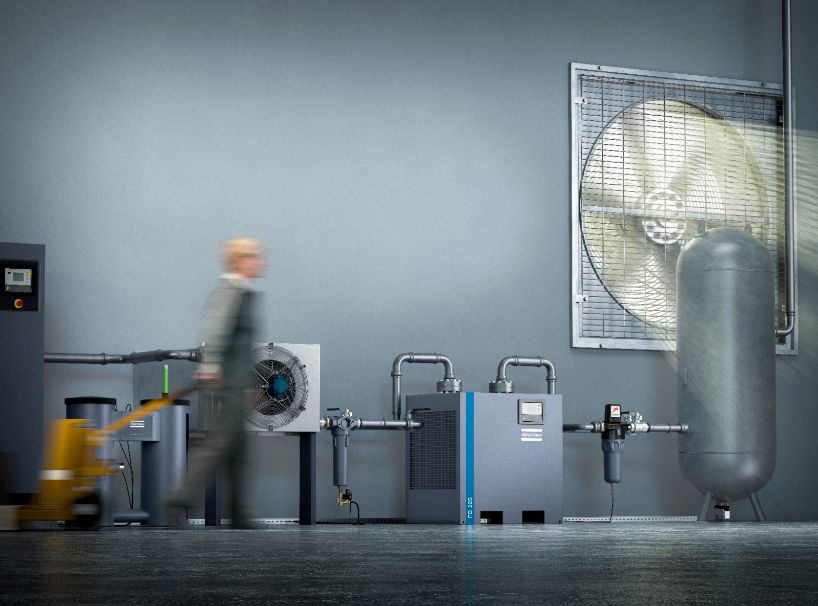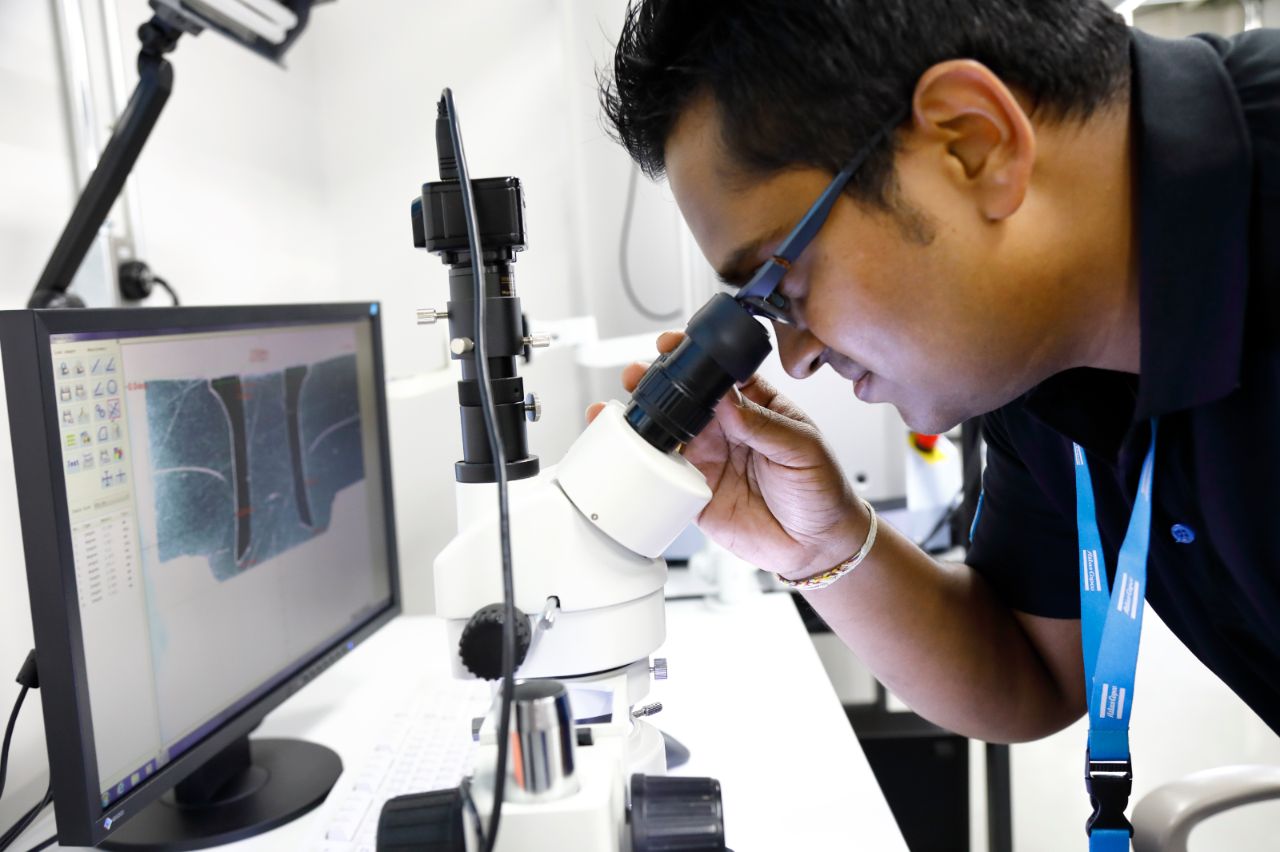How 3D Printing can solve some of the big challenges of the heavy machinery industry
Atlas Copco Compressor Technique is part of Atlas Copco Group and is a leading provider of compressed air solutions: industrial compressors, gas and process compressors and expanders, air and gas treatment equipment, and air management systems. Established in 1873 in Stockholm, Sweden, the company today employs more than 43.000 people in 70 countries and serves customers in more than 180 countries.

The heavy machinery and equipment industry is facing several challenges with assembly processes such as a low degree of flexibility and potentially costly human errors. An increasingly digital and connected assembly process will vastly benefit the manufacturers – and reduce their costs. 3D Printing, among other technologies such as Artificial Intelligence (AI) and Augmented Reality (AR). This will ultimately result in overcoming these challenges and lead to reductions in cost, less downtime and increased quality.

Tooling and prototyping as main application areas today with strong push towards end-use applications
A product-portfolio that is characterized by large and heavy equipment makes the identification of successful applications for 3D printing within Atlas Copco Compressor Technique challenging. Most applications that are being realized today are thus either prototyping or tooling applications. That being said, there is a clear direction towards serial applications. This has recently resulted in the first functional component for metal 3D Printing being used in a compressor as end use part.
Building trust in 3D Printing by solving challenges
Overcoming the bias that 3D Printing is not a reliable production technology has also been a major challenge within Atlas Copco Compressor Technique. The company has successfully overcome this bias recently, mainly driven by two achievements. First, the serial production part, the oil nozzle mentioned above, has led to lots of momentum and trust in the technology. The case has been strongly advertised using internal channels and cemented 3D Printing as mature production technology. Second, 3D Printing has recently been used to produce a prototype for a component that could not be delivered otherwise due to supply chain issues. After 3D Printing successfully produced the component, the team was surprised by the quality, cost and lead time the technology could achieve. Using 3D printing as a tool to solve a situation where no other solution was available thus changed the view of the technology for the future.
Lesson 1
Use 3D Printing to solve challenges where no other solution exists.

Spreading knowledge in all directions
3D Printing knowledge is spread at Atlas Copco in all directions: bottom-up, top-down but most importantly among peers. Team member that actively work with 3D Printing are not just engineers, but at the same time do marketing and sales for the technology.
In general, 3D Printing knowledge is spread on three levels: The most fundamental level is a constant communication about 3D printing on every occasion. This includes posting regular success stories on the intranet, printing awards for suppliers or handing out 3D printed give aways showcasing the design freedom of the technology. The mid-level consists of a company-wide training platform. Besides focused online learning courses on 3D Printing, this platform hosts a playlist with videos on in-house technologies and applications. On the highest level, every opportunity is used to present 3D Printing to upper management. This strategy keeps a constant awareness of the technology, for example at procurement when there is an upcoming supply chain crisis and 3D Printing might be able to help.
The result of this strategy is a steadily increasing number of applications that are realized from departments across the company, which recently resulted in the 1.000th build job that was printed internally.
Lesson 2
Spread knowledge in all directions: Bottom-up, top-down and among peers.
From one pioneer to a team of over 50 3D Printing employees worldwide
Since the first person working full-time on 3D Printing was hired in 2015, the team has constantly been growing to now over 50 employees globally. After the first person was responsible for pioneering the technology, further employees have been hired with more specialized 3D printing skills and profiles. The key was to keep the team flexible and adapt it according to the current 3D printing challenges and strategy.
Learning 3
Adapt your team to the current requirements for your 3D Printing strategy.
Looking ahead: Internationalization and new technologies
3D Printing at Atlas Copco Compressor Technique is now on the way to become a well established manufacturing technology. While the site in Antwerp will continue to act as a technology pioneer, there is a focus on increasing the use of the technology in other sites with the vision to establish global 3D-printing hubs. At the same time, Atlas Copco is continuously exploring new and upcoming 3D Printing technologies to realize the potential for their products.
Key Learnings
3D Printing at Atlas Copco Compressor Technique is now on the way to become a well established technology. From the early days in polymer printing and prototyping the the technology has proven itself as a tool to solve complex supply chain issues. At Atlas Copco Compressor Technique, 3 key learnings where identified that can help industrial companies to successfully implement the technology:
- Use 3D Printing to solve challenges where no other solution exists.
- Spread knowledge in all directions: Bottom-up, top-down and among peers.
- Adapt your team to the current requirements for your 3D Printing strategy.

